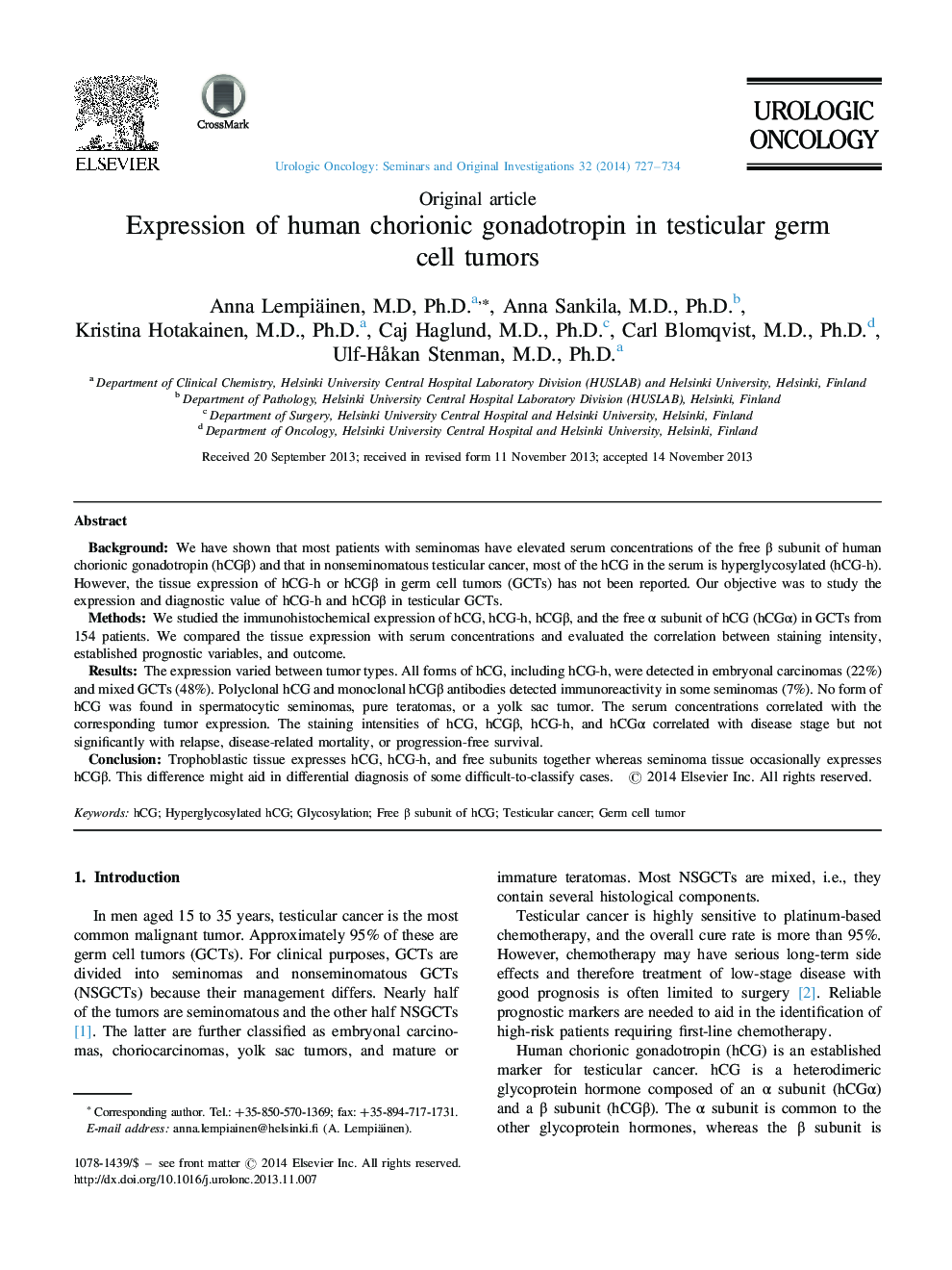| Article ID | Journal | Published Year | Pages | File Type |
|---|---|---|---|---|
| 6194360 | Urologic Oncology: Seminars and Original Investigations | 2014 | 8 Pages |
BackgroundWe have shown that most patients with seminomas have elevated serum concentrations of the free β subunit of human chorionic gonadotropin (hCGβ) and that in nonseminomatous testicular cancer, most of the hCG in the serum is hyperglycosylated (hCG-h). However, the tissue expression of hCG-h or hCGβ in germ cell tumors (GCTs) has not been reported. Our objective was to study the expression and diagnostic value of hCG-h and hCGβ in testicular GCTs.MethodsWe studied the immunohistochemical expression of hCG, hCG-h, hCGβ, and the free α subunit of hCG (hCGα) in GCTs from 154 patients. We compared the tissue expression with serum concentrations and evaluated the correlation between staining intensity, established prognostic variables, and outcome.ResultsThe expression varied between tumor types. All forms of hCG, including hCG-h, were detected in embryonal carcinomas (22%) and mixed GCTs (48%). Polyclonal hCG and monoclonal hCGβ antibodies detected immunoreactivity in some seminomas (7%). No form of hCG was found in spermatocytic seminomas, pure teratomas, or a yolk sac tumor. The serum concentrations correlated with the corresponding tumor expression. The staining intensities of hCG, hCGβ, hCG-h, and hCGα correlated with disease stage but not significantly with relapse, disease-related mortality, or progression-free survival.ConclusionTrophoblastic tissue expresses hCG, hCG-h, and free subunits together whereas seminoma tissue occasionally expresses hCGβ. This difference might aid in differential diagnosis of some difficult-to-classify cases.
